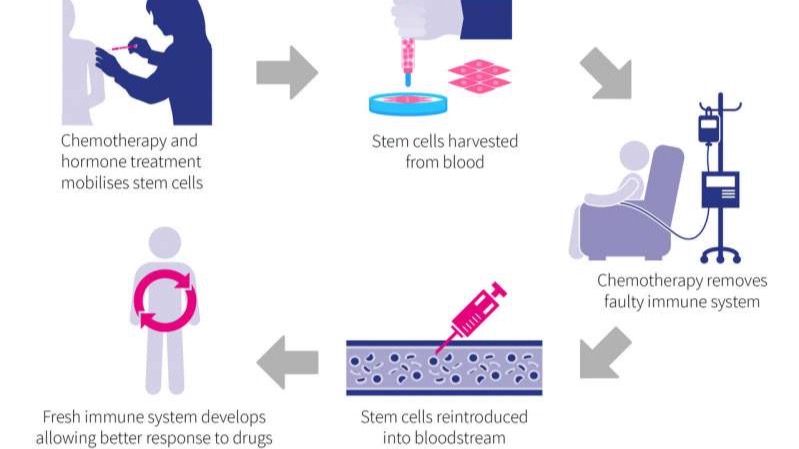
In this week's Abundance Insider: Spider-inspired microbots, stem cell treatments for Crohn's disease, and open-source 3D bioprinters.
Cheers,
Peter, Marissa, Kelley, Greg, Bri, Jarom, Joseph, Derek, Jason, Claire and Max
P.S. Send any tips to our team by clicking here, and send your friends and family to this link to subscribe to Abundance Insider.
P.P.S. If you enjoy Abundance Insider, consider joining Abundance Digital, Peter's online educational portal and community of abundance-minded entrepreneurs. Within our community, you’ll find weekly video updates from Peter, a curated news feed of exponential news, and a place to share your bold ideas. Click here to learn more and sign up.
Spider-like Microbots Will Get Under Your Skin (In a Good Way)

What it is: A team of roboticists at Harvard’s Wyss Institute for Biologically Inspired Engineering, Harvard John A. Paulson School of Engineering and Applied Sciences (SEAS), and Boston University are developing a line of microscopic robots inspired by insects like the Australian Peacock spider. The intent is that these bots could one day be capable of performing delicate medical tasks inside the body, but first they needed to figure out how to build at the millimeter scale with micrometer-scale features. In a process they've called Morph, the team stacked 12 layers of elastic silicone to form the legs and abdomen followed by other more refined techniques like laser micro-etching to fine-tune the specs. At less than a centimeter wide, the spider bot is able to move, flex its joints and raise its abdomen all by injecting microfluids into a network of hollow channels running throughout its body.
Why it's important: Not only are we rapidly improving our ability to construct bots at microscopic scales, we're also witnessing an proliferation of biocompatible designs that promise to usher in more personalized and precise treatments, which in turn enable increased healthy lifespans. What other problems can we solve through biomimicry? | Share on Facebook
Spotted by Morgan McDermott / Written by Jason Goodwin
Stem Cell Transplants to Be Used in Treating Crohn's Disease

What it is: Queen Mary University of London and Barts Health NHS Trust have begun a clinical trial using stem cell transplants to grow new immune systems for patients with Crohn’s disease. A painful, chronic intestinal disease affecting 780,000 Americans, Crohn’s is intractably difficult to treat, often fought with inflammation-reducing drugs and even invasive surgical procedures to remove parts of the bowel. Shifting from a palliative approach, however, this clinical trial uses chemotherapy and hormone treatment to mobilize and harvest patients’ stem cells. Once additional chemotherapy wipes out a patient’s faulty immune system, reintroduced stem cells can then develop into new immune cells. Ultimately, researchers have evidence to believe that this newly populated immune system will no longer react adversely to a patient’s own gut or ward off drug compounds before they have a chance to work.
Why it's important: As Chief investigator James Lindsay explains, "We're hoping that by completely resetting the patient’s immune system through a stem cell transplant, we might be able to radically alter the course of the disease, [...] [allowing] some patients to finally respond to drugs which previously did not work.” Beyond Crohn’s disease, a recent application of stem cell transplants to wipe out and replace immune systems has even been found successful in treating multiple sclerosis. By targeting the immune system directly, stem cell transplants therefore show great potential for damaged tissue replacement and long-term clinical care of some of today’s most baffling chronic diseases. | Share on Facebook
Spotted by Morgan McDermott / Written by Claire Adair
HALO Collar Promises to Reduce Concussions in Contact Sport

What it is: Aexos, a canadian startup founded by two athletes, released HALO: a wearable compression shirt designed to combat concussions in contact sports. Specifically, HALO minimizes the risk of whiplash, which occurs when a sudden blow to the head makes it jerk forward or backward. The force of whiplash can tear muscles in the neck and cause concussions. HALO protects wearers in three ways: neck support, posture support, and reduction of head movement when impacted. Safe 4 Sports already officially endorsed the product, and preorders are now live through Kickstarter.
Why it's important: Sport-induced head trauma has profound effects on work and quality of life. Helmets are critical to prevent concussions, but they don't always work: impacts can propagate through even the best helmet technology, and brain trauma can occur as a result of rotational movements of the brain due to receive impact forces. HALO is another tool in the athlete's tool box to stay safe, healthy and exert sustainably. | Share on Facebook
Spotted by Marissa Brassfield / Written by Max Goldberg
MIT Uses Cryptographic Ledger to Track Police Surveillance

What it is: MIT researchers have created a digital ledger to help track police surveillance and usage of data collected by private companies. Investigators frequently need to access online data from tech companies -- data which users might think is private and protected. When this data is accessed by law enforcement, certain information needs to stay secret so as to not compromise the investigation. At the same time, knowing what data was accessed by law enforcement allows the public to hold law enforcement and the legal system accountable. This blockchain application will add time and other event triggers to law enforcement data usage. After the relevant investigation(s) expire, information about the accessed data can immutably be published to the blockchain. The MIT team proposes leveraging a blockchain-based ledger and smart contracts to ensure transparency and accountability when it comes to law enforcement accessing our online data.
Why it's important: In 2018 data and privacy rights are a hot conversation topic. In a world powered by data-driven machine learning algorithms, is it reasonable to trade our privacy -- in the form of data about every aspects of our lives -- for hyper-efficient products and services? If we do not have privacy, it's important, at the very least, to have insight and transparency into how our data is used. The power of blockchain is its ability to immutably add transparency to the flow and history of information. | Share on Facebook
Spotted by Marissa Brassfield / Written by Max Goldberg
CMU Engineers Find Innovative Way to Make a Low-Cost 3D Bioprinter

What it is: Researchers at Carnegie Mellon (CMU) are beginning to crack the code of large-scale, low-cost bioprinting while preserving the quality of a detailed print. Their printer? A standard MakerBot desktop 3D printer, modified over six years with open-source hardware and software, now capable of printing lab-grown cells, including collagen and other extracellular matrix proteins. A novel technique specifically designed to print soft and living materials, CMU’s Freeform Reversible Embedding of Suspended Hydrogels (FRESH) prints tissue in a gel, which is then carefully melted away to guarantee the viability of cells. CMU’s engineers have made their bioprinter designs open source -- now buildable for under $500 -- enabling new medical collaborations and democratized access.
Why it's important: One of the greatest challenges with 3d printing in biomedical involves preserving the high resolution of small prints while still achieving tissue scaffolds at a larger scale. Building upon CMU’s large volume syringe pump extruder, however, researchers may soon be able to scale up the printing of biomaterials, such as cartilage and other complex artificial human tissue, without losing essential detail in cellular layers. Now plummeting in cost, bioprinting lab-grown cells to form living structures at scale cam revolutionize regenerative medicine, enabling us to cheaply support, repair, and augment diseased and damaged areas of the body without losing the resolution critical for functioning tissue. | Share on Facebook
Spotted by Marissa Brassfield / Written by Claire Adair
Tech Mahindra Adopts Facial Recognition to Mark Attendance

What it is: Now that facial recognition technology is powerful and cheap enough to run on even a mobile device, Indian tech giant Tech Mahindra is bringing it into the workplace. Employees, after giving consent, can opt to enter facilities with their face versus keycards. Additionally, the Tech Mahindra system will also monitor employees' mood to better understand how day-to-day performance and morale.
Why it's important: As powerful technology like facial recognition democratizes and new use cases emerge, what regions of the world will be most receptive to adoption? Will India, for example, adopt facial recognition as favorably as their Chinese neighbors? How might this data help companies optimize their talent management processes? | Share on Facebook
Spotted by Marissa Brassfield / Written by Jason Goodwin
What is Abundance Insider?
This email is a briefing of the week's most compelling, abundance-enabling tech developments, curated by Marissa Brassfield in preparation for Abundance 360. Read more about A360 below.
Want more conversations like this?
At Abundance 360, Peter's 360-person executive mastermind, we teach the metatrends, implications and unfair advantages for entrepreneurs enabled by breakthroughs like those featured above. We're looking for CEOs and entrepreneurs who want to change the world. The program is highly selective. If you'd like to be considered, apply here.
Abundance Digital is Peter’s online educational portal and community of abundance-minded entrepreneurs. You’ll find weekly video updates from Peter, a curated newsfeed of exponential news, and a place to share your bold ideas. Click here to learn more and sign up.
Know someone who would benefit from getting Abundance Insider? Send them to this link to sign up.






